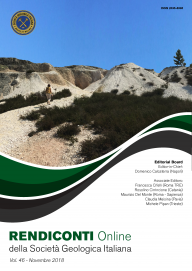
Genetic algorithms based road analysis in Cappadocia, Turkey
Giacomo Titti (a), Jacopo Turchetto (b) & Giuseppe Salemi (b)
(a) National Research Council, IRPI, C.so Stati Uniti, 35127 Padova, Italy.
(b) University of Padova, Department of Cultural Heritage, Piazza Capitaniato, 35139 Padova, Italy.
Corresponding author e-mail: giacomo.titti@irpi.cnr.it.
Volume: 46/2018
Pages: 67-73
Abstract
This paper focuses on a GIS-based spatial analysis dealing with the Roman-Byzantine routes of central Cappadocia, Turkey. Taking into consideration the various typologies of settlements and their distribution within that region, we approached the issue from an operational research perspective.
The spatial analysis started from a meta-heuristic algorithm, based on Genetic Algorithms, implemented to find the ‘best’ path from the site of Tyana (modern Kemerhisar) to the site of Colonia Acrhelais/Koloneia (today Aksaray). The algorithm was applied to a cost weighted map, elaborated overlaying the ASTER Global Digital Elevation Model and other raster layers with journey ‘friction’ or ‘facilitation’ factors. In this way, depending on the presence/absence of physical obstacles, or on the level of visibility ‘from the roads’ or ‘of the roads’, each cell of the weighted map was defined by a specific value: the higher the values of the cells, the more expensive the track passing through them. The results of the spatial analysis were compared with the routes previously recreated on the basis of archaeo-historical data.
Keywords
Get Full Text